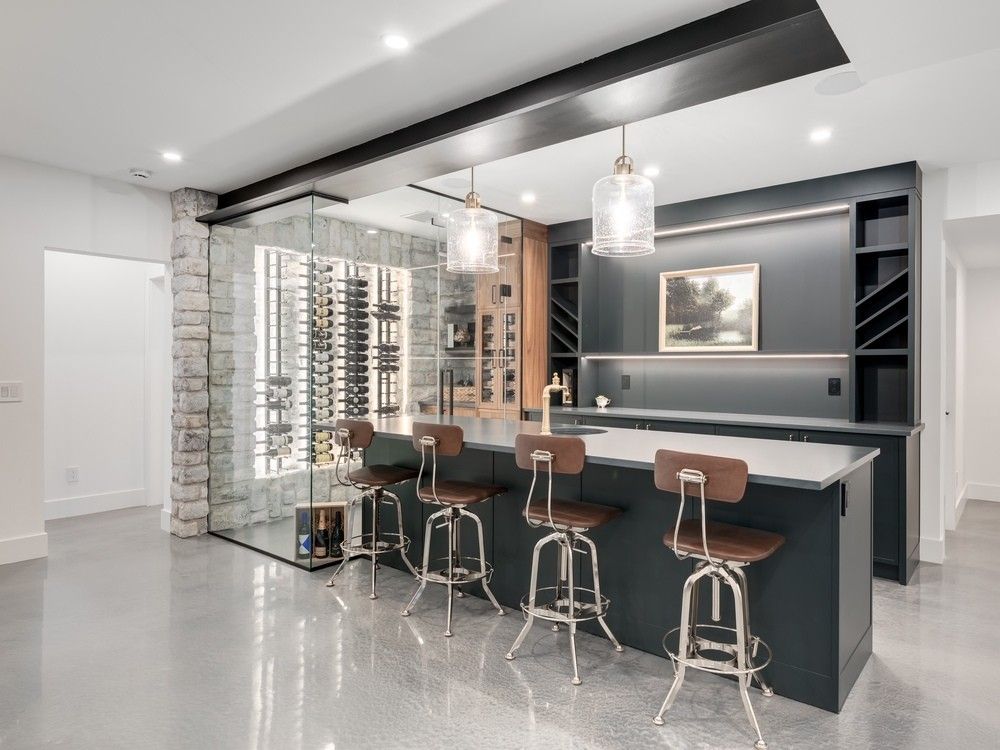It’s often a top-of-mind conundrum for buyers of new build homes — whether or not to have the builder finish the basement during the new build process or wait and either DIY it or have a contractor do it at some point down the road.
“I get calls from people all of the time asking this and it’s a great question,” says Tom Welling, general manager of renovations at Renova Homes and Renovations, a Calgary-based home builder and renovator, noting that he has experience creating basements as both a new home builder and as a renovator. Plus, he is a former new home warranty inspector. “So I’ve seen it all when it comes to basements — the good and the bad,” he says with a laugh.
“I believe you should consider it like this: Imagine a contractor constructing your house; these challenges apply equally when either building a bespoke home or doing renovations. People get startled by the upfront costs. Consequently, they start budgeting meticulously and conclude: ‘Actually, we’ll delay developing the basement.’ Later, upon taking ownership of the property, they often regret not proceeding with it,” explains Welling.
The cost of finishing the lower-level will definitely add to the home-building budget, but it is typically money well-spent. It increases a home’s value and if the lower level is designed as a legal secondary suite, the financial return as a mortgage helper can be significant.
Plus, there is the convenience of having the basement completed when you take possession, allowing you and your family utilize the space.
It’s possible to roll the cost of the basement into the home’s overall financing, but for many, qualifying at the higher value (with the asset value of the finished basement) may be an issue.
“But know that the price of finishing the basement after a home is built is going to cost you $30,000 to $40,000 more,” says Welling. “So you need to weigh that out. To do the construction in the new build cycle, it is much less expensive. When you wait until after, it’s like doing a full renovation after you’ve just built your house. You have to bring all of the trades back on site.” Not to mention the noise and the dust.
But, if you decide to wait, there are several pluses to this scenario. The first being that waiting to finish the lower level gives the home’s foundation time to “cure,” and settle and any cracks or leaks in the lower-level will be obvious in the unfinished state. Secondly, it allows the homeowner to get a feel for how the lower-level space will be used by the family, which isn’t always apparent from the get-go. This is key to creating a good design that works for the home’s flow and for optimum use of the space. The third plus is that it allows for more time to save for the construction and finishing.
Welling recommends keeping expenses low by having the contractor finish all the foundational elements during construction—such as plumbing preliminaries, wall framing, heating installations, and more.
“It’s useful to be aware if you’re considering adding a secondary suite since this includes various safety essentials such as egress windows, a distinct heating system, and an independent entryway,” explains Welling.
Should you opt for developing a legal secondary suite at your property within Calgary, the municipal government may assist in offsetting certain expenses related to enhancing safety measures via their secondary suite incentive initiative. This scheme offers financial support amounting up to $10,000 specifically allocated towards the creation of a secondary living unit. The funds cover expenditures necessary for incorporating essential safety components into areas where they were previously absent before applying for a construction permit. As per information available on the official city portal, eligible safety enhancements encompass items such as egress windows (capped at $1,500), integrated and wired smoke/carbon monoxide detectors ($1,000 max.), secured evacuation routes ($1,000 cap.), fire-resistant barriers ($4,000 limit), dual heating systems along with individual climate control units (maximum payout: $6,000). It should be noted though that cumulative reimbursements cannot surpass the stated threshold of $10,000.
Nevertheless, extra funds are provided for enhancing accessibility and energy efficiency. Currently, backyard suites do not fall under the scope of the incentive program. For more details about the secondary suite incentive initiative, visit the City of Calgary’s webpage at calgary.ca.
The last crucial element of this plan revolves around employing a skilled renovation specialist.
“Absolutely hire a contractor who is seasoned and has strong connections with various trade professionals. This is crucial because locating skilled workers for the job is currently quite challenging; everyone seems to be swamped. Starting with recommendations from friends and family can be very effective, followed by obtaining an approximate cost along with a comprehensive explanation of what that quote covers,” explains Welling.






